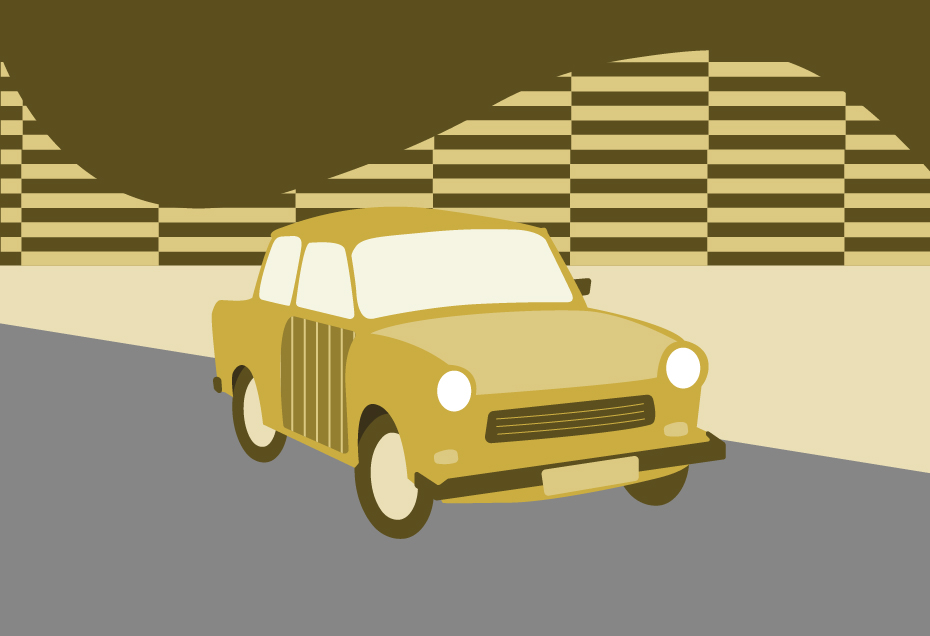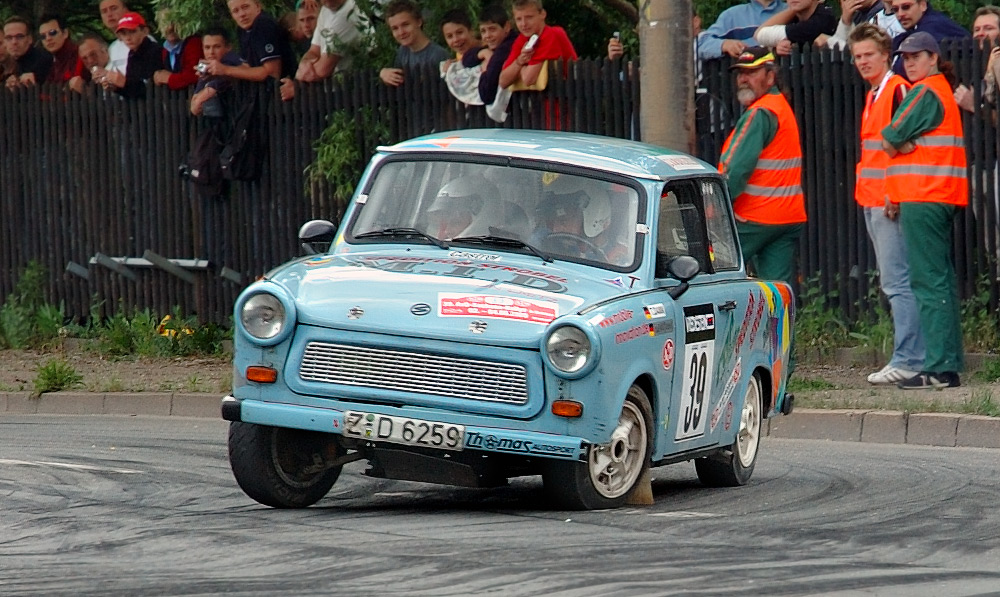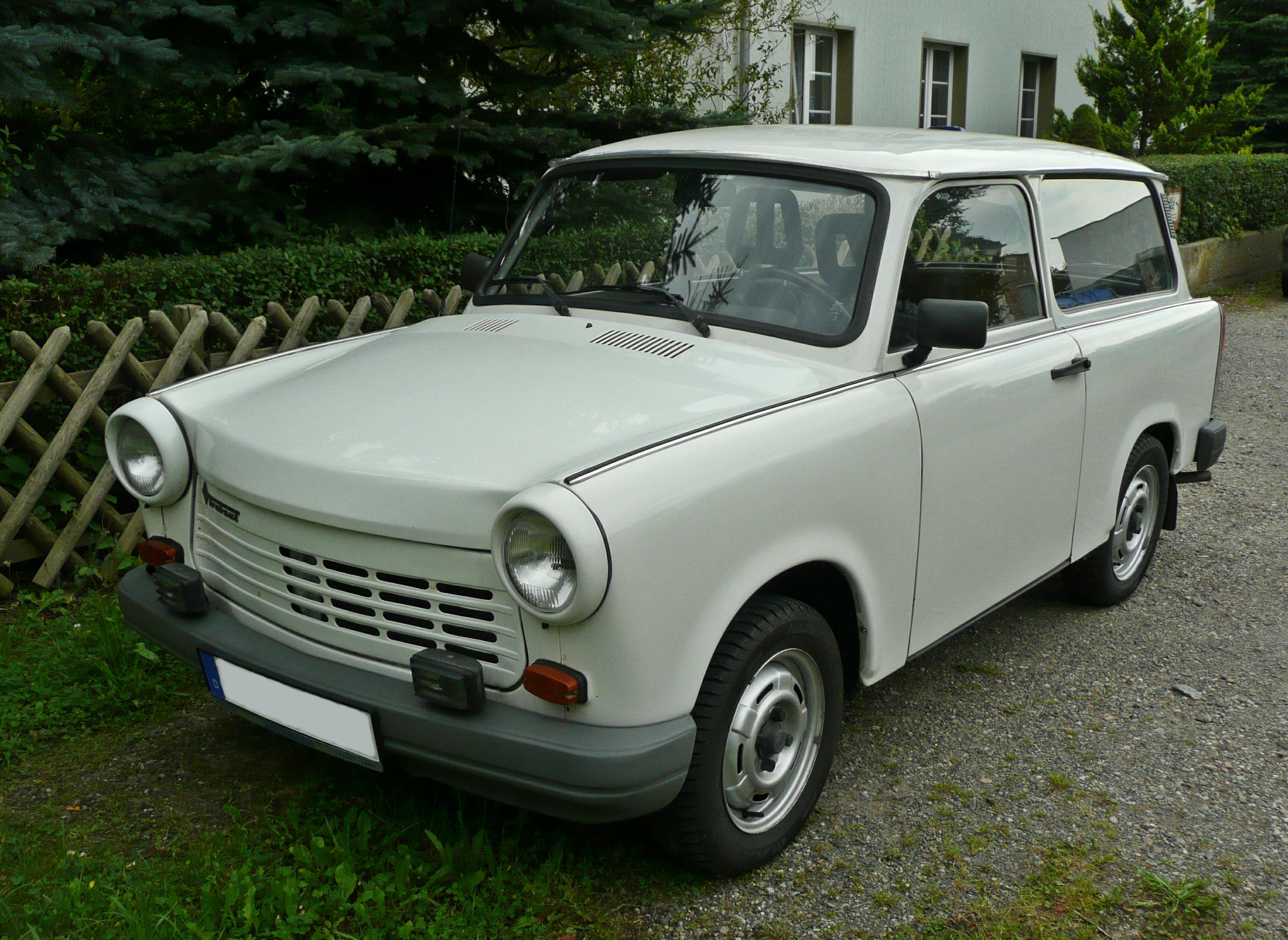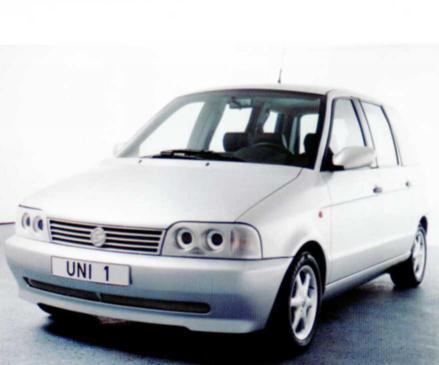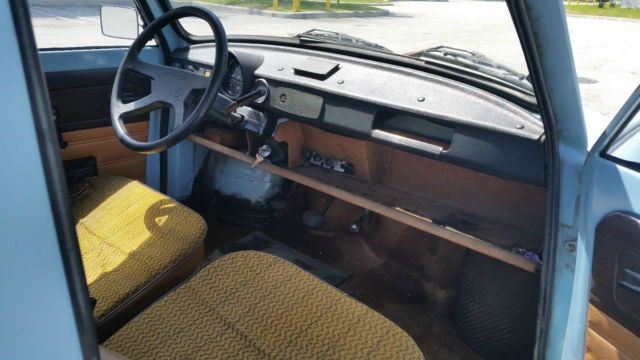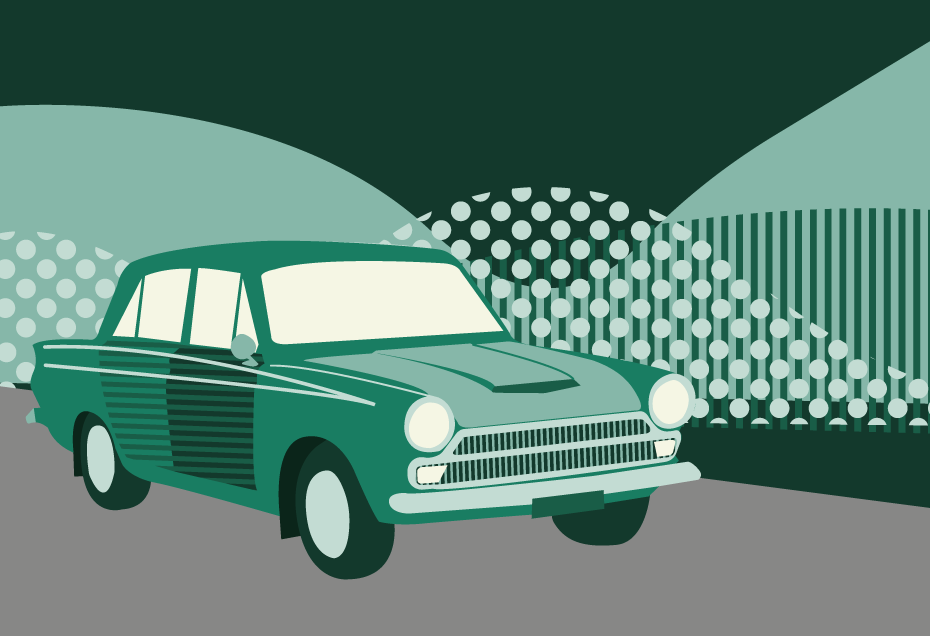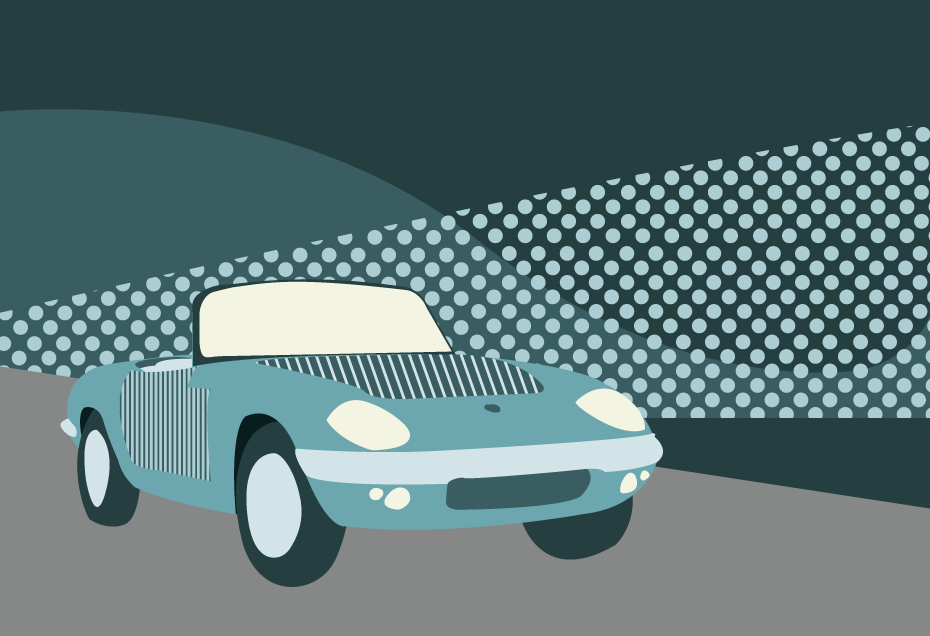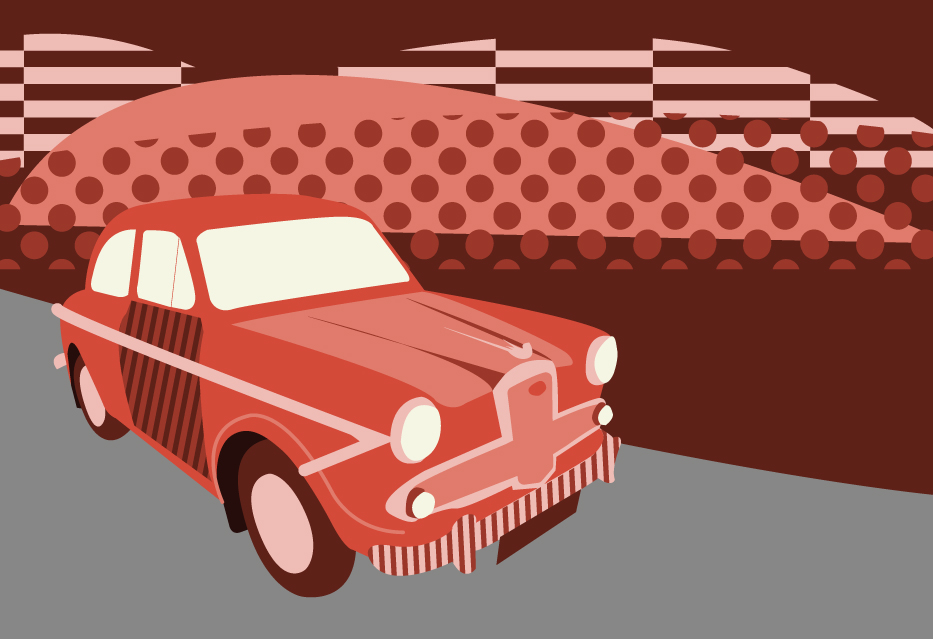Few cars hold such an iconic place in European history as the humble Trabant, the East German people’s car that became a symbol of freedom at the fall of the Berlin Wall.
Derided in the west as the very essence of communist inefficiency and incompetence – noisy, smoky, slow and uncomfortable – the car is the subject of more myths and misinformation than almost any other.
But, as the now defunct marque approaches its 60th anniversary in November 2017, we go behind the Iron Curtain to separate fact from fiction and speak to one devoted owner.
On November 9, 1989, a little plastic car with a two-stroke engine that had long been ridiculed in the west became a global symbol of hope.
As the Berlin Wall came down, East Germans took to their Trabants to cross the Bösebrücke at Bornholmer Strasse, one of the border crossings that had separated the east and west of the city for 28 years.
Television cameras beamed footage of the cars streaming west around the world, and the Trabant had sealed its place in history.
The car’s role in the reunification was commemorated by artist Birgit Kinder, whose mural of a Trabant breaking through the Wall forms part of the East Side Gallery on one of the remaining sections, while an annual wall-breaking ritual is still held by enthusiasts in Berlin and tourists can enjoy the Trabi experience with sightseeing drives around Berlin.
The first Trabant, which means “satellite” and was named in honour of the Soviet Sputnik space launch, left the factory 60 years ago in November, with more than 3 million produced over 33 years.
Trabant: genesis
After the war and the separation of Germany, there was little left of the East German auto industry; those factories that weren’t damaged by bombs had been pillaged of parts and machinery by the Soviets.
Only a handful of car plants escaped unscathed, and in 1946 the East German government nationalised the ravaged motor industry, including cars, motorcycles, trucks and tractors, under a governing body called the IFA (Industrieverband Fahrzeugbau, which translates as the Industrial Association for Vehicle Construction).
One of those remaining factories was the Auto-Union plant at Zwickau, a Saxony town with a rich automotive heritage, that made Audi/DKW and Horch cars before becoming VEB Automobilwerke Zwickau, and then VEB Sachsenring, after the war. It would go on to become the home of the Trabant.
The early cars produced by the newly-nationalised industry were necessarily re-worked pre-war models, such as the coach-built IFA F8 and the more expensive Luxus F8 and F9.
The need for an affordable “people’s car” was clear, and in 1953 the IFA was given the task by government of developing a cheap car for the masses that didn’t consume the country’s scarce resources, notably steel.
It was to be “not a primitive solution” and “must be a fully valid means of transport with adequate driving qualities and an appropriate degree of comfort”.
This was the bubble car era and, like the western Mini, the Trabant was intended to be a step up from the economy cars available, such as the tiny Messerschmitt KR175.
The outline specification was for a lightweight car, no more than 600kg, with a two-stroke engine of 400-500cc producing 14-20hp, an effective and simple suspension, and avoiding the use of steel.
A tough plastic called Duroplast was the answer to the steel issue, a substance made from phenolic resin reinforced with cotton, which had been under development at Sachsenring since 1951 and was first used two years later as an option on the IFA F8, with the plastic replacing the steel and fabric parts of the body.
Its use, though, gave rise to one of the most popular misconceptions about the Trabant: that it’s made of cardboard.
That it was dubbed in its homeland as the Zwickauer Rennpappe – Zwickau racing cardboard – no doubt helped cement this notion among westerners.
Peter Frost, an authority on eastern European vehicles who has owned a Trabant 601 since 1990, says the myth was probably born of a misunderstanding of East German humour.
“It was an East German joke about the cars and these jokes have a habit of taking on a life of their own if you don’t understand the humour,” he says.
“Also, it tends to tear in an accident, so the result can look a bit like cardboard. However, it’s actually very strong and Trabants did pretty well in crash testing around about the time the Wall came down – better than a VW Polo.”
The material, with similar hard-wearing, heat-resistant properties to Bakelite, was created by mixing phenolic resin – a by-product of the chemical dying industry – with cotton fibre and heating in a press.
“They layered up the cotton with granules of the phenolic resin, made several layers and pressed it like pressing a steel panel,” says Peter.
“It was a plastic bodywork construction method that was much closer to a steel production method than fibreglass, which is the other common plastic alternative. It made it very strong.”
The first car to use Duroplast for its entire body as standard was the pre-Trabant P70 introduced in 1954, which was offered as a saloon, van and sporty coupe mostly destined for the export market.
Like our illustration of the Trabant at the beginning of the article?
Download a free high-quality poster version here.
Its contemporary styling – the coupe bears similarities with the retro-designed Nissan Figaro – made the car an immediate hit with the public, but at 9900 Marks it didn’t quite fulfil the government’s desire for a super-budget car.
Engineers at Zwickau persisted with improvements and presented bosses at the IFA in November 1957 with a car that looked similar, but was significantly re-engineered – the P50 and the start of the Trabant name.
Available to buy in late 1958, the P50 was relatively advanced for its time, with front wheel drive, a modern, steel monocoque frame, the all-Duroplast body and independent suspension.
It was powered by an air-cooled 17hp, two-stroke, 499cc engine manufactured by VEB Barkaswerkes in nearby Chemnitz, which was light enough to be lifted by hand from the car and worked on with standard household tools.
Improvements in power to 20hp, the addition of synchro on the gears, and new paint and trim options kept the P50 ticking over before the P60, with a 594cc engine producing 25hp, was introduced in 1962.
Birth of the Trabant, the 601
In 1963, production began on the Trabant most well-known all over the world, the 601.
With updated bodywork not unlike a contemporary Austin A40 Farina, improved suspension and a larger boot, the 601 was hugely popular in its home market, with power increased to 26hp in 1969.
Although some manufacturers, including Saab, Auto-Union/DKW and Suzuki, were still using two-stroke engines, most car-makers had switched to four cylinders.
It’s widely thought that the Trabant’s engine was already obsolete when it was introduced, but Peter disagrees.
“Two-stroke engines in cars were always a bit niche, but I wouldn’t say they were outdated in 1963,” he says.
“In fact, they’ve never really gone away – various manufacturers have worked on them in recent years, and are probably continuing to do so. Both the Ford Ka and the Chrysler Neon were developed with two-stroke engines, but the companies got cold feet at the last moment and hurriedly substituted four-stroke engines when the cars went into production.”
The engine configuration mattered little to eager buyers, with the factory unable to keep up with demand and waiting times lengthened by the year – depending on where you lived.
With some production diverted for export to help boost East German foreign currency reserves, by the late 1980s domestic customers might have to wait 10 years for a new car.
In export markets, which included other Eastern Bloc countries like Hungary, Bulgaria and Poland, as well as West Germany, Belgium, the Netherlands and South Africa, waiting times were much lower.
New models were being planned in Zwickau, with prototypes developed using two-stroke, four-stroke petrol and diesel, and even the Wankel rotary engine, but the government had no intention of diverting precious funds for new factory tooling when the existing model was selling so well.
Externally, the car was to remain virtually unchanged for 27 years, which in itself is hardly unusual for big-selling cars at the time – witness the Mini, Beetle and 2CV.
Adrian Flux Classic Car Insurance
There were many changes under the skin though, including upgrades to the engine, braking system, electrics, suspension, dashboard displays and the introduction of electronic ignition.
A dashboard fuel gauge was offered as an optional extra from 1984 onwards, drivers previously having to check the levels using a calibrated dipstick that also helped calculate the correct amount of oil to add when filling up. Later two-stroke cars featured a clear plastic tube fitted between the fuel hose and the top of the fuel tank, which allowed the driver to visually check the fuel level without taking the cap off the tank and using the dipstick.
Trim levels were tweaked too – the Deluxe model in 1966 came with two-tone paintwork and chrome trim, but the government continued to turn down pleas from Zwickau for a new model.
The end of the “Trabi”
So the 601 continued throughout the 1980s, but with exports falling as the Polski Fiat and Skoda ate into sales, and morale and quality control at the factory falling, the writing was on the wall as the communist regime approached its own endgame.
That TV footage of a convoy of smoking Trabants trundling across the border in November 1989 did little for the car’s reputation among watching westerners.
There was one last hurrah for the car thanks to a collaboration between IFA and Volkswagen, who had been working together since before the fall of the Wall to develop prototypes of Trabants and Wartburgs fitted with engines based on the Polo and Golf 1.1-litre and 1.3-litre units.
The IFA made engines under licence for VW, and the Trabi’s infamous two-stroke unit was replaced with this licensed version of the Polo’s 1.1-litre unit.
Zwickau engineers had wanted to put the unit into an all-new car and, although newly-developed gearbox, transmission, suspension, and braking systems were introduced, the Trabant 1.1 looked almost unchanged from the 601 to the untrained eye.
“Although it looks similar to the two-stroke P601, it actually shares very few parts with it,” says Peter.
“The car is structurally different to accommodate things like the new engine, transmission, and suspension.
“Some of the exterior panels needed to be changed to accommodate the taller engine, new lights, radiator for water cooling, and rear mounted fuel tank. Even the dashboard, instruments, switches, and controls were different, and a dashboard fuel gauge was fitted as standard for the first time.
“So there were significant changes to tooling required both at the factory and for the component manufacturers.”
By 1990, though, the motoring world had moved on and East Germans opted for secondhand western cars that were more modern, and efficient.
The Trabant did not survive reunification for long, but VEB Sachsenring fared better; once full production has ceased the company worked on car design and the manufacture of components under the name Sachsenring (AutomobileTechnik) AG.
While some redundant Trabant workers were employed in a new VW factory on the outskirts of Zwickau, those that remained played a part in refurbishing 444 unsold cars that returned to the Sachsenring plant in 1995.
“A number of Trabants that had been exported to Turkey were returned unused to the factory,” he says.
“They were refurbished and updated, and they sold very quickly, unlike a few years earlier when new Trabants were difficult to sell.”
The company did design an all-new car in 1996, a diesel-electric hybrid called the UNI 1, but, after failing to find backing, bankruptcy followed.
A rescue package was put together by Härterei und Qualitätsmanagement GmbH, and the company still has a base at Zwickau manufacturing car components under the name HQM Sachsenring GmbH.
Owning and driving a Trabant
To most western eyes, the 601 (the only Trabant most even know existed) was a travesty, an anachronistic example of the failures of communism.
Time magazine said “this was the car that gave Communism a bad name”, and historian Richard Leiby said the Trabant had become “a symbol of the technological and social backwardness of the East German state”.
But was it really as bad as its reputation suggests? Not so, says Peter Frost, and he’s owned and driven more eastern European cars than most, as well as more technologically advanced western vehicles.
“Misinformation tends to have a habit of taking on a life of its own, and once something appears in print or on the internet it just gets copied willy nilly and people believe it’s true,” he says.
“A classic is you often hear or read that it used an old DKW engine, which it didn’t. The engine was really leading edge, two-stroke technology at the time it was developed.
“It used a disc inlet valve – a disc that rotates through the crankshaft. That, at the time, was leading edge two-stroke motorbike racing technology.”
Like our illustration of the Trabant at the beginning of the article?
Download a free high-quality poster version here.
Self-deprecating East German humour – there were as many Trabant jokes in its homeland as there were Skoda jokes in the UK – and that footage of smoking Trabis crossing the border all played a part in sealing its reputation.
“They’re not as smelly and smoky as people make out,” says Peter, who lives near Uxbridge. “They can be if they are badly maintained, or if you use the wrong oil in them. But they’re a lot cleaner than people have you believe, very economical to run, good around town and easy to park.”
The two-stroke engine required owners to mix fuel and oil direct into the tank, like motorcycles of the time, and an incorrect mixture ratio or using incorrect oil could all add to the Trabant’s smoky woes.
Clearly, by 1989, the car’s were outdated, but Peter says they should be judged against the competition at the time they were conceived.
“As a lightweight four-seat people’s car – compare it with the bubble car, the things that were around at the time in the east, it was a real big step up in the same way the Mini was a big step up in the west,” he says.
“I compare them with things like Morris Minors and 2CVs, which I’ve driven. I think they compare very well with that sort of car. That’s the sort of market they were aimed at – a people’s car, cheap, efficient transport.”
Over the years, the Trabant’s brakes, comfort levels and handling have all been called into question by westerners used to western cars.
But, again, Peter begs to differ: “They’re not as bad as people made out, and I say that from a position of knowledge have also owned Mercedes, BMW, and Saab so I can give a balanced contrast without prejudice either way.
“The brakes are actually very, very good, but some people who drive them have never driven anything old before – you need to understand brakes that don’t have servo assistance. My MoT tester said ‘the brakes on your car are better than the BMW I’ve just tested’.
“They handle very well and accelerate pretty smartly. There’s not any embarrassment in traffic, they keep up very well. They will thrash down the motorways and hit surprising speeds. The factory stopped quoting improvements in the speeds even though they kept making engine changes to make them faster. It’s certainly quicker than a 2CV.
“The ride is pretty good if you look after it and grease the leaf springs like you are supposed to. A lot of people don’t know you are supposed to though. The cornering is pretty good and the seats are quite comfortable. The East Germans did put some thought into the ergonomics, but the pedals are a bit offset due to the wheel arch intrusion.”
After the Wall fell, East Germans initially looked on the Trabant with contempt as a symbol of the failed communist state.
But as time went on, Ostalgia – a German word for feelings of nostalgia for certain aspects of life – kicked in and the car was looked on with more affection.
“It’s quite funny,” says Peter. “Years ago when I was first driving a Trabant around Germany people were disdainful and would look down their nose – ‘why do you want one of those?’ Now it’s totally different.
“When I go shopping I often get in the Trabant. I get stopped by east Europeans who love it – ‘this was my car!’ that sort of thing. They’re always pleased to see it now.”
Peter’s current Trabant 601 is a 1989 model, one of the last of the line, a throwback to a time when communist East Germany made its own cars for its own people.
It’s their “people’s car”, their Beetle, their 2CV, and who are we to turn up our noses? It did the job it was intended to do, and sold in its millions.


